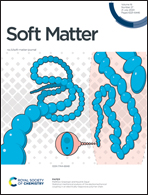Complex transformations of hard-magnetic soft beams by designing residual magnetic flux density
Abstract
Soft active materials that show a response under external stimuli such as light, electricity, heat and magnetic fields have wide applications in the fields of soft robotics, flexible electronics, biomedicine, etc. Recently developed hard-magnetic soft (HMS) materials that undergo rapid transformations under magnetic actuations belong to a new class of soft active materials. In order to fulfill the potential applications of HMS structures, it is of great importance to investigate their mechanical responses. In this work, based on the principle of minimum potential energy, a theoretical model for HMS beams with the consideration of exact geometric nonlinearity is proposed, which is capable of characterizing the complex transformations of the HMS beam. The Galerkin method is utilized to solve the governing equation of the system. By comparing with the recent simulation and experimental data, the proposed model is validated. It is found that with the designed residual magnetic flux density in the HMS beam, the initially straight beam would deform into complex configurations under specified magnetic actuation. Interestingly, the crawling of inchworms, grasping of tongs and slithering of snakes can be well imitated by the HMS beam as a consequence. The developed theoretical model could serve as a benchmark for the analyses of HMS beams in the future, and the observed phenomena could shed light on the design of soft robotic devices used in extreme environments based on HMS structures.



 Please wait while we load your content...
Please wait while we load your content...